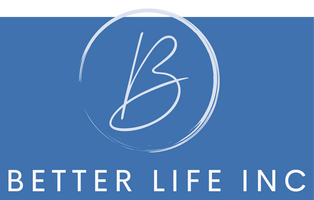Both challenging and promising, the topic of healing estranged relationships gives us hope. Life is a series of connections, and sometimes those connections fray, but it’s never too late to start mending the bridges.
A. Acknowledging the Pain
Facing the Reality: Healing begins with acknowledgment. We can’t sweep the pain under the rug; instead, let’s face it head-on. Understand that estrangement is a complex, multifaceted experience, and the emotions surrounding it are valid. Sweeping it under the rug, otherwise known as denial or the freeze stage of PTSD’s fight, flight, freeze, is a trauma response from when you were a child and lacked tools to cope or problem solve. It’s also possible that the skills you needed weren’t demonstrated for you. Regardless as adults there are a slew of techniques to identify, acknowledge, and heal our wounds.
Journal Prompt 1: Reflect on the emotions you’ve been holding onto regarding the estranged relationship. What specific feelings come to the surface?
Try a mirror exercise where you look at yourself in the mirror, place your hand on the mirror as well, and offer yourself compassion, curiosity, validation, encouragement, love, and affirmation. Acknowledge your feelings and offer yourself soothing and care.
B. Cultivating Compassion for Yourself
Self-Reflection: Before we can extend olive branches, we must first offer one to ourselves. Self-compassion is the cornerstone of healing. Understand that you are human, with imperfections and vulnerabilities, and that’s okay. Seldom are things in absolutes or all-or-nothing thinking. No one is all good or all bad and when we draw conclusions from one event or rare events, when we reject positive experiences and focus on the negative, or when we jump to conclusions, we are thinking in absolutes and not realities. This applies to our view of ourselves as well as others.
Journal Prompt 2: In what ways can you extend compassion to yourself as you navigate the journey of healing? How can you offer the same consideration to others?
C. Navigating the Path to Reconciliation
1. Open Communication:
Initiating contact can be daunting, but it’s a crucial step. Begin with open and honest communication. Share your feelings and what you want to happen. Listen to their feelings and create a safe space for vulnerability. Practice good listening skills and ask that the other person mutually commits to the same. For additional information on healthy communication consider Transforming Relationships: Healthy Communication for a Fulfilling Life | Better Life Inc .
Journal Prompt 3: What kind of communication would feel authentic and safe for you to initiate?
2. Expressing Empathy and Compassion:
Empathy and Compassion bridges gaps. Put yourself in the other person’s shoes. Understand their perspective, acknowledge their feelings, and express genuine empathy. When we deny the pain of any person, we diminish their humanity as well as our own. Abraham Lincoln once said, “if you look for the bad in people expecting to find it, you surely will.” Don’t let unrealistic expectations and unresolved childhood trauma ruin your adult relationships. Forgive yourself and others for not knowing what wasn’t known until it was lived through. Honor your respective paths. Not able to understand what it’s like to be in the other person’s shoes? You can still acknowledge that their plight must have been hard or hurtful – that’s compassion. Saying you’ve not ever experienced something yourself but recognize that it had to have been difficult to be in that situation.
Journal Prompt 4: Consider the other person’s point of view. How might understanding their experience contribute to the healing process?
3. Setting Boundaries:
Healthy relationships thrive on mutual respect for boundaries. Establish clear boundaries that prioritize emotional well-being for both parties. This creates a foundation for rebuilding trust. Boundaries are not about what the other person can or cannot do but rather expressing your needs and your anticipated response if those needs are not met. An example is expressing that you want to be talked to respectfully, no yelling, no name calling, etc., and if it happens you intend to end the discussion and table it for a future time. For additional information on boundaries: Setting Boundaries | Better Life Inc .
Journal Prompt 5: What boundaries feel essential for your emotional safety in this relationship?
D. Embracing the Journey, Not Just the Destination
Patience and Perseverance: Healing estranged relationships is not a sprint; it’s a marathon. Commit to the process. Be patient with yourself, and with the other person. Celebrate small victories along the way. An article that might assist with this is Embracing Imperfection | Better Life Inc .
Journal Prompt 6: What small victories have you experienced in your journey towards healing?
E. Seeking Professional Support
Therapeutic Guidance: Sometimes, healing requires external support. Therapists and counselors can offer guidance, facilitating open communication and providing tools to navigate the complexities of estrangement. For information on getting the most out of therapy: Get the Most Out of Therapy | Better Life Inc
Journal Prompt 7: Have you considered seeking professional support? What steps can you take to explore this option?
F. The Power of Reconnection
Remember, both parties need to be willing to commit and engage in the process, and the timeline may vary for everyone. Embrace the journey, stay true to yourself, and, above all, cultivate hope for the potential of reconnection.
Conclusion:
I encourage you to take those courageous steps toward healing fractures in relationships that have great meaning to you. Rebuilding relationships is a testament to your resilience and a profound investment in your well-being. Until next time, take care, and remember that you’re stronger than you think.
Wishing you excitement on your journey and the joy of growth,
For additional information on this topic:
Forgiveness: Healing and Transformation | Better Life Inc
Connection in Relationships – Understanding Attachment Styles | Better Life Inc

